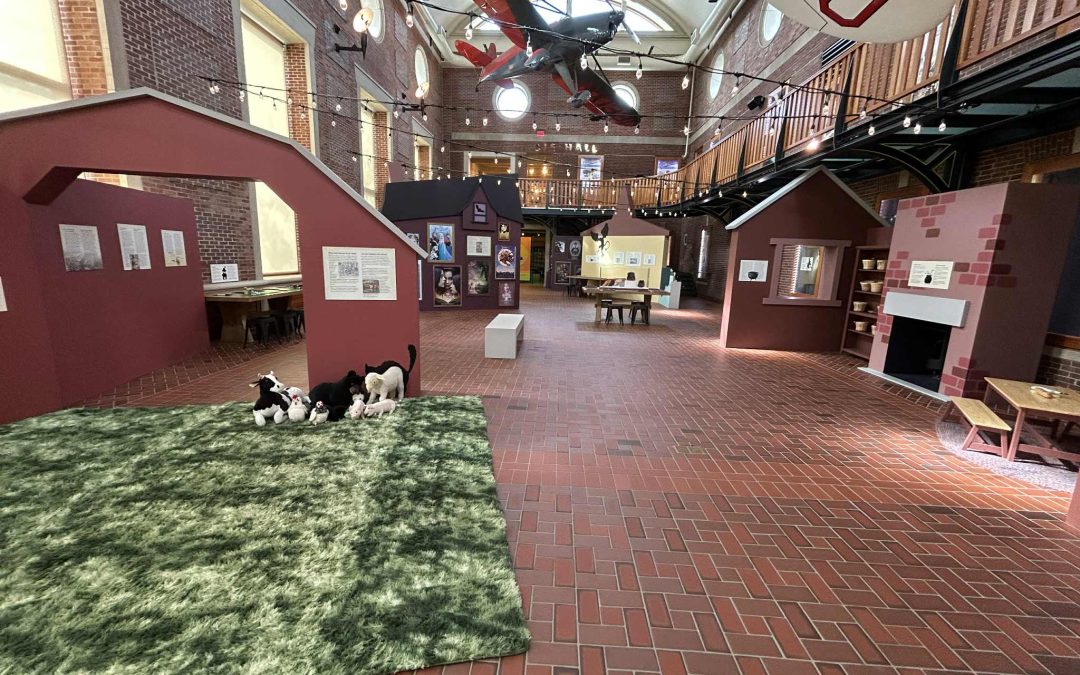The “Witch Panic! Massachusetts Before Salem” exhibit inside Springfield Museums.
Reminder Publishing photo by Ryan Feyre
As someone who attended Salem State University and experienced downtown Salem in all its glory, I can tell when a witch-themed attraction is either a worthy presence in the community or a nonsensical cash grab for naïve tourists.
I figured my four years in the Halloween mecca were the final time I’d encounter any witch-related activity
I’m now firmly ensconced in a Western Mass. condominium, a half-decade removed from college and jaded by all the spells and alchemy. Those years were a joy, but I had no intention of revisiting anything related to the Salem Witch Trials or witchcraft in general. I felt like I’d seen it all.
That is until I stumbled across the “Witch Panic! Massachusetts Before Salem” exhibit at the Springfield Museums on Edwards Street. The title alone captured my attention because I was never attuned to the history of witch panic prior to Salem, nor was I familiar with its origins in Springfield. At first glance, it seemed like a fresh and informative addition to the longstanding historical canon.
And that’s exactly what it was. The exhibit, nestled inside the Wood Museum of Springfield History, brought an extremely measured, fact-based and all-encompassing look into the evolution of witchcraft, including the hysteria that consumed Springfield 40 years before the Salem Witch Trials.
Rather than take the gimmicky route some attractions tend to do, the “Witch Panic!” exhibit illustrates important historical context that ultimately informed the eventual panic and frenzy that ensued in 1600s Springfield. There are interesting tidbits about why the broomstick and cauldron became symbols of darkness as well as factoids that explained the customs and lifestyle of natives and European settlers at the time.
The exhibit also takes a sobering look at how historical prejudices of marginalized groups contributed to the scapegoating during the witchcraft hysteria in Springfield, exploring how those who did not fit certain cultural norms were often the targets of the period.
What impressed me the most about this exhibit was its ability to balance this comprehensive origin story with an interactive component that all ages can enjoy. Visitors can develop their own opinions about the era by answering questions provided on some of the exhibit’s historical blurbs.
Children, meanwhile, can dress up in garments from the time period and build Legos that mimic brickmaking from the 1600s. Families will likely find something interesting when traversing through the decorative setup.
For pop culture nerds like me, there’s even a wall of movie and television posters showcasing the lineage of witches throughout entertainment and the evolution of their portrayal in these mediums. I was particularly impressed with the exhibit’s depiction of how the symbol of a witch evolved from something that was feared to something that was revered and celebrated.
The one aspect of the exhibit that I thought would fall into gimmick territory was the second-floor display delineating the witchcraft rumors that swirled around Springfield settlers Mary and Hugh Parsons. The gist of it is that visitors review the evidence of the Parsons’ witchcraft provided by the museum and determine their innocence or guilt.
Thankfully, the demonstration still leans into the fact-based, dignified nature of the rest of the exhibit. It’s a harrowing addition, but also a necessary one in painting the period’s borderline absurdity while still maintaining a sense of humanity through its comprehensiveness.
I implore anyone interested in this time period to visit the “Witch Panic!” exhibit. It simultaneously functions as an unheralded slice of Springfield history and a panoramic view of witchcraft and all its nuances.
Readers can learn more about the exhibit by visiting springfieldmuseums.org/exhibitions/witch-panic-massachusetts-before-salem. The exhibit is open to the public until Nov. 2.


